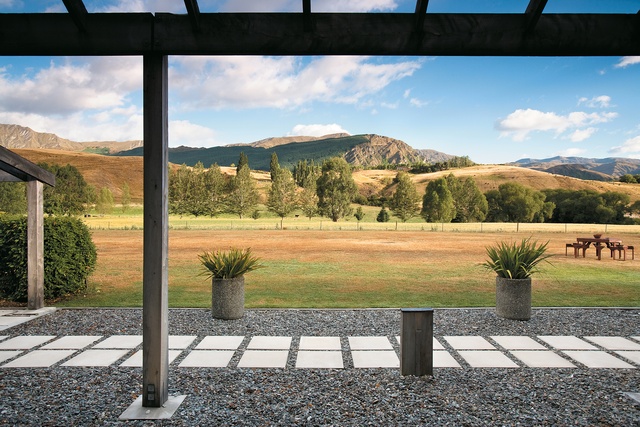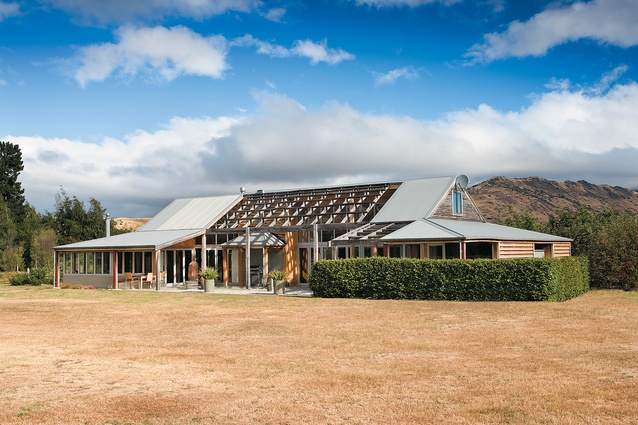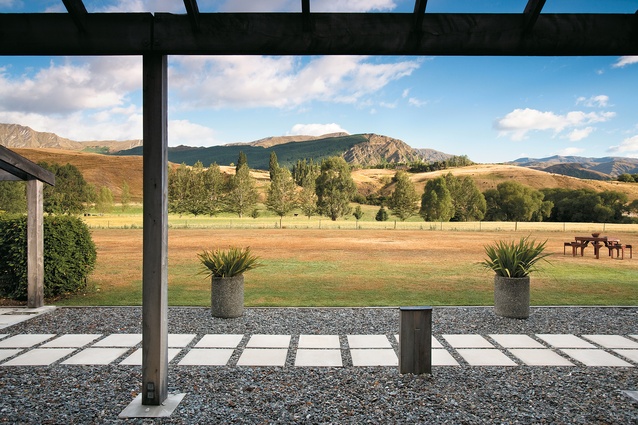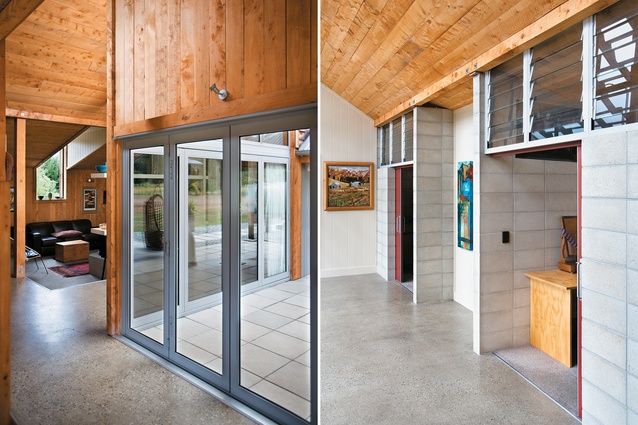Houses Revisited: Humanist habitat
A Wakatipu house benefits from Arrowtown architect Max Wild’s local knowledge in this project, which first appeared in Houses magazine in 2008.
How to describe Max Wild? One of New Zealand architecture’s hidden treasures? That’s too corny a phrase – Wild would roll his eyes if he read it, or laugh if he heard it and, anyway, it’s not really accurate: his talent is an open secret among many of his professional peers. What about “local hero”? A bit closer to the truth; Wild has practised out of the small Central Otago town of Arrowtown for nearly two decades, designing houses that exhibit his knowledge of his region’s climate, environment and built history, and reveal his understanding of his clients and the lives they live.
But Wild would have no truck with any heroic appellation, no matter how specific its application. New Zealand may have its share of architects who’d rather fancy being at the centre of a cult of personality, but Wild is too smart and too sensible to harbour such an aspiration. His intellectual honesty and temperamental reticence might not bring him notoriety, but – if there’s any justice in these matters – he will receive the more durable reward of a reputation. Not being a man of mode, Wild is not destined to be a man just of the moment.

The Clarke House, completed in 2003, is sited on the flat floor of the Wakatipu Basin, between Arrowtown and Queenstown. It is a fine example of Wild’s work, and an instructive expression of his design philosophy. As with all of Wild’s houses, there’s more here than meets the eye – and certainly more than can be captured by the camera’s lens. This is not a criticism of the photography that accompanies this text – Simon Devitt is a very able photographer, one of the handful of architecture specialists in this country – but is merely an acknowledgement of the experiential nature of Wild’s architecture. No-one could accuse Wild of being a “magazine architect”; to an uncommon degree, his houses, in order to be understood, must be sensed, not just shown.
In large part, this is because Wild is not dogmatic or didactic. Sure, his plans accommodate conventional requirements – for kitchen, bathrooms, dining and living areas, etc. – but they also make room for ad hoc use (for life, that is). The Clarke House, like other of Wild’s houses, has a couple of what the architect calls “indeterminate spaces”– rooms which the occupants will use as the mood takes them. These rooms could be for reading or resting, or talking or listening – or, whatever.

The inclusion of these “left-over” spaces could be interpreted as subversive of domestic order, but only if the I’m-the-boss architecture of contemporary minimalism is the design norm. What these non-defined spaces, with their unspecified activities, really indicate is their author’s relaxed and realistic appreciation of human nature. Wild’s not a neo-modernist, he’s a neo-Kantian: “Out of the crooked timber of humanity, no straight thing was ever made”.
There’s wit in this architecture. While Wild has some fun with spatial relativism in the interior of the Clarke House, he essays a little deconstructivism on the exterior. The house is, simply, a long barn-like form with contrasting façades. On its south and ‘public’ side, the house presents a rather mute face to the road and cold southerly winds; on the north and ‘private’ side, it is open to a big lawn and mountain views. On this side, the “big shoulders” that hold at the east and west ends the living/dining area and the main bedroom, respectively, frame a deep verandah, over which stretches a latticework wooden sunscreen. Wild calls this skeletal structure “a gossamer version of the form”. It could also be seen as a fraying of the form, or a dissection of it.

The exposure of so much timber to the weathering effects of a local climate that is extreme by New Zealand standards inevitably suggests the temporal nature of architecture. Perhaps this gesture is also an acknowledgement of the balance of power between the built and unbuilt environments in one of the most awe-inspiring locations in the country. Wild knows better than to set himself up as an Ozymandias in Central Otago.
Of course, despite the ephemerality on the periphery the house performs its basic duty of providing shelter and comfort, and does it very well. Realising what a house is up against in the Central climate – hot summers and cold winters – Wild has pulled the roof down low, especially over the “shoulders” on the north side. The stripping of the cover over the verandah allows warming sunlight into the row of children’s bedrooms that line the hallway on the north side, and onto the hallway’s polished aggregate floor. This corridor is no insignificant thing – Wild calls it “the cricket pitch” – and, in fact, there is nothing mean about this ample but not extravagant family home. Max Wild? He’s the genius of his loci.
Click here to see more Houses Revisited. And sign up to our email newsletters to receive Houses Revisited straight to your inbox.














